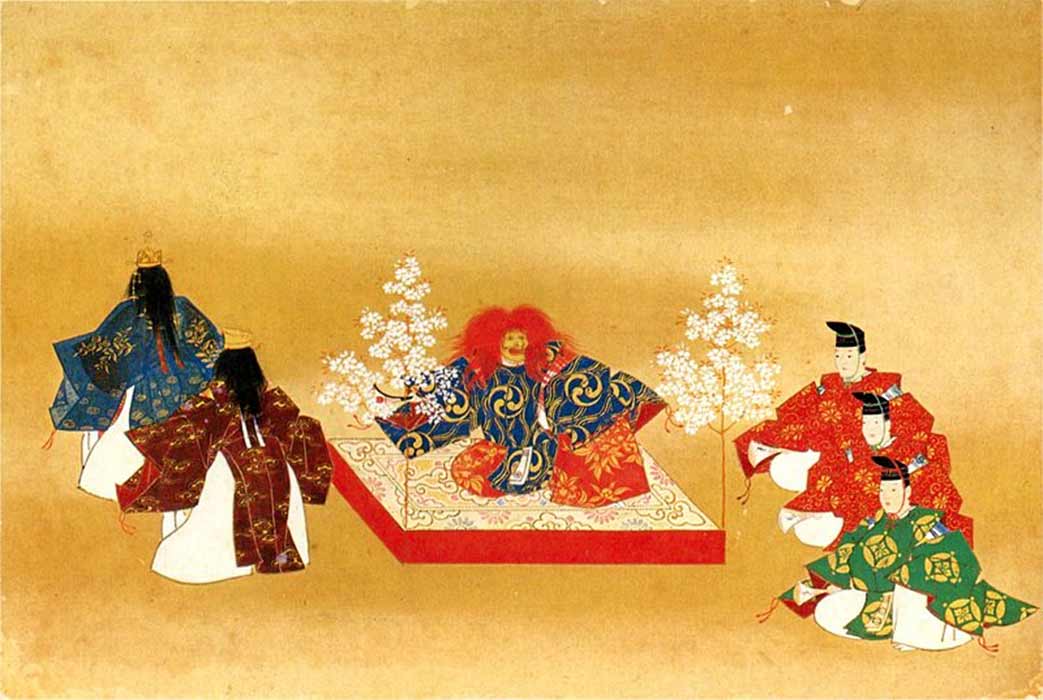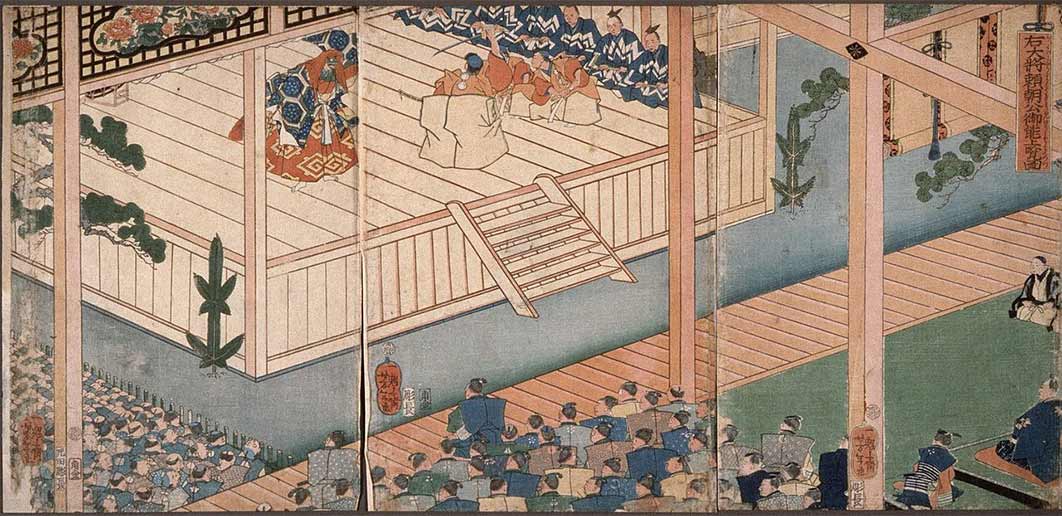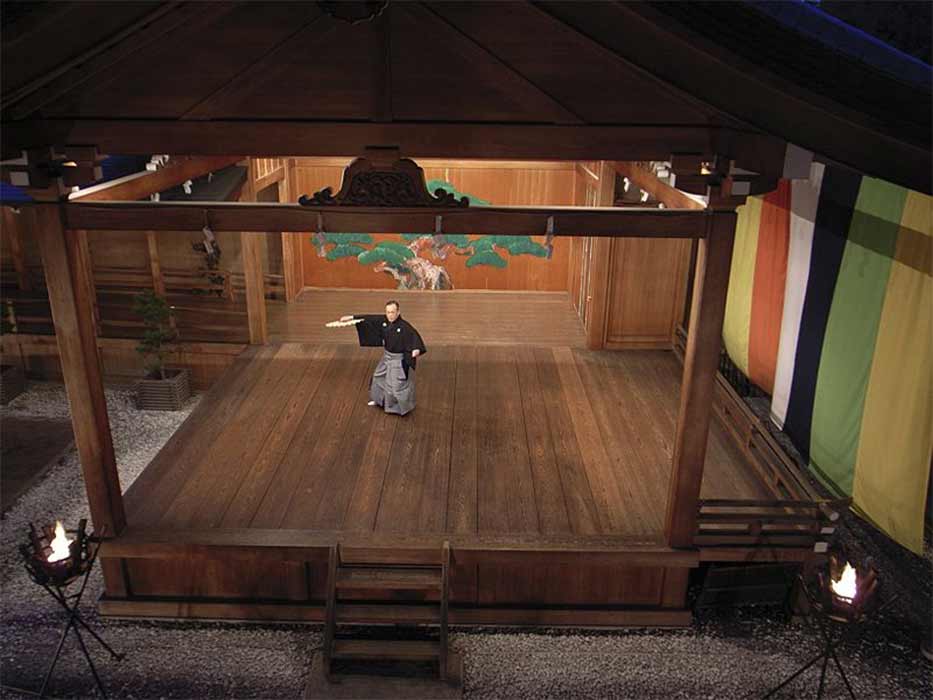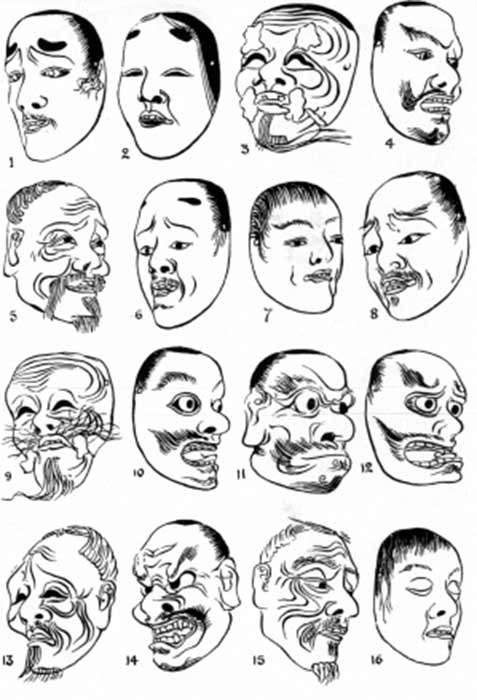
The Art Of Noh: 14th-Century Japanese Dance Drama
Since the 14th century AD, Noh has been a major form of classical Japanese dance-drama. It is the oldest major theatre art form that is still performed on a regular basis to this day. Noh, which is written in late-middle Japanese, incorporates masks, costumes, and various props in a dance-based performance. The masks represent roles such as ghosts, women, deities, and demons as the actors employ highly-stylized gestures to convey emotions. Each Noh performance requires advanced performance and technical abilities from its actors and musicians as it involves a complex combination of acting, dance, music, and other skills. Modern players are also required to be fluent in the language of the original scripts, which is an old version of the Japanese language familiar to us today. Not surprising, then, that in this context the kanji for Noh (能) means "skill," "craft," or "talent," particularly in the field of performing arts.

Lord Yoritomoku Watches a Noh Performance (Public Domain)
The Noh Stage
The traditional Noh stage is completely open, allowing the performers and audience to share an experience throughout the performance. With no proscenium or curtains to obstruct the view, the audience can see each actor even before and after they enter and exit the central stage. One of the most distinguishing features of a Noh stage is its independent roof which hangs over the stage even in indoor theaters. The roof, which is supported by four columns, represents the sanctity of the stage, and is inspired by the haiden (worship pavilion) or kagura-den (sacred dance pavilion) of Shinto shrines. The Noh stage is entirely constructed of unfinished hinoki (Japanese cypress) with few decorative elements. The hashigakari ("suspension bridge"), a narrow bridge at upstage right used by actors to enter the stage, is another distinguishing feature of the stage. The bridge represents the mythic nature of Noh plays, which frequently feature otherworldly ghosts and spirits.

A demonstration of Mai-bayashi/Shimai at Dōgō Noh Stage in Dōgo Onsen, Matsuyama, Japan. (CC BY-SA 2.0)
Masks Of The Greeks
For thousands of years, countless cultures, ethnic groups and faiths have worn masks. The stage has always been one of the most popular places to discover masks as it continues to play an important part in cultural norms, references, and historical relevance to this day, reflecting not only the emotion an actor is attempting to communicate, but also societal conventions and expectations. Greek theater masks date back to the time of Aeschylus (c. 524 – c. 455 BC), the first of the great Greek tragedians. Unfortunately, because Greek masks were fashioned of organic materials, they quickly disintegrate after usage. However, evidence of their existence is still found on vases, paintings and carvings. To the ancient Greeks, the mask was much more than just a dramatic element on stage. The mask was an object that could elevate the performers to sacred levels.
- Asian Storytelling: Rakugo, Pingshu And The Art Of Sitting Seiza
- A Dance for Gods, Wars and Beauty: The History of the Elegant and Deadly Ancient Art of Sword Dancing
- A Dark Time for the Samurai and the Trouble with the Feudal Japanese Caste System
Masks were used in both drama and comedy by the ancient Greeks, and they came in a variety of shapes and styles, ranging from the terrified damsel in distress to the malevolent beast. Extremely exaggerated emotion or gender are perhaps the best ways to describe Greek masks. As only men were allowed to participate in theatrical performances, it therefore had to be very obvious, for example, that the mask was female. Male performers would even go so far as to wear prosthetic breasts to portray a woman properly. Greek masks were originally designed to cover the entire head from front to back, as well as sections of the body, with extremely small holes for the eyes and mouth. The actor's face should be hidden as much as possible. However, the performers' ears were always left out, typically covered with hair, so that they could hear everything; with the masks often having restricted visibility, hearing was the only sense they could rely on.

A range of Noh masks (Public Domain)




